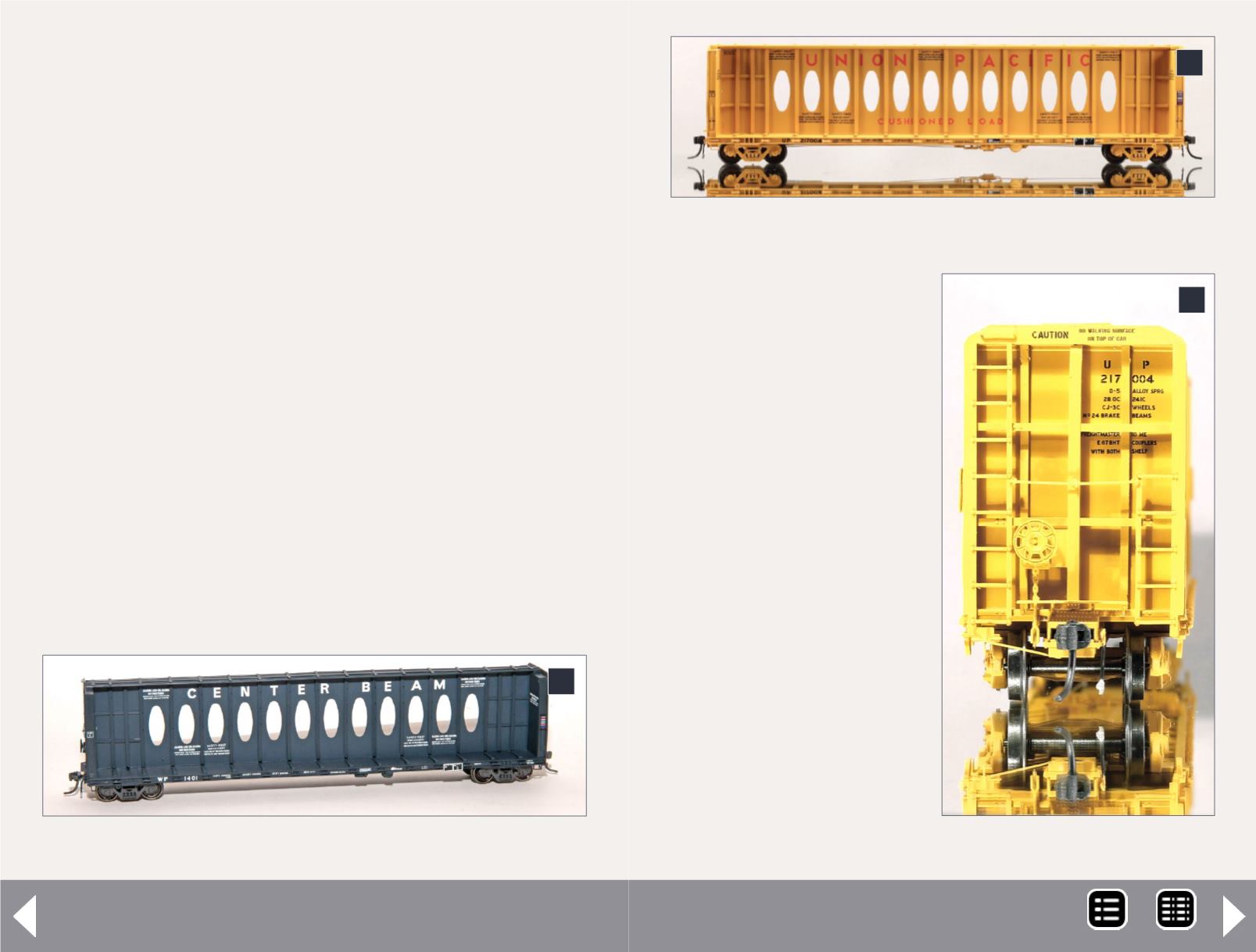
First Look: Center-beam flatcar - 2
its construction. The center-beam itself is a 0.010” etched brass
piece and appears prototypically slim in profile. It is 8-11/16"
long from the outsides of the bulkheads, and weighs 3.8
ounces, significantly less than the 5 to 5½ oz. recommended by
the NMRA for a car of its length. With very little space to hide
extra weight in its detailed underside, adding weight via a load
would seem to be the most visually acceptable solution.
The car comes with factory-installed Kadee #58 couplers and
the coupler box lids are screwed on, making it relatively simple
for those who prefer a different size or type of coupler to trade
them out. Care should be taken with the fragile coupler cut
levers, which are attached to the lid, air hoses attached to the
side of the coupler box, and the brake rigging in the same area
on the “B” end of the car.
The printing on the model is crisp and clear, down to the tiniest
print in the data panel and the “Thrall Car” logo and, on some
models, the road numbers on the trucks.
History and information on center-beam
flatcars
“Center Beam” is a Thrall Car Co. trademark. The company
built the first of the type in 1969 for bundled lumber traffic on
the Burlington Northern, using a plan developed by Canadian
2: WP 1401 (Joe Brugger photo).
2
3: UP 217004.
3
4: Closeup of the B end.
4
National. Think of the beam
as a very tall center sill,
improving the ability of a
low-decked flat car to carry
heavy loads. It also ties the
bulkheads, useful on cars
hauling shifty loads like lum-
ber, poles and pipe.
The type has have been
built in several lengths
– 66' between the bulk-
heads for BN, 83-footers
for steel truss traffic on the
Seaboard Coast Line, then
these ExactRail 60' 8” cars in
1977 for Milwaukee, Union
Pacific and Western Pacific.
Later cars were built to 73'
for less-dense kiln-dried
lumber, and Walthers has
offered these. The Front
Range-McKean model car
MRH-Nov 2013


